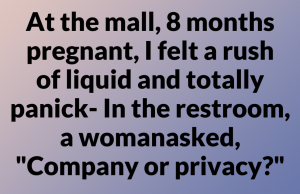As a parent and spouse, you try to ensure your family is healthy and happy, and you do everything within your power to keep them safe. It doesn’t cross your mind that the products that you are using to keep them safe may actually be placing them in harm’s way.
When you think of health and well-being, proper nutrition and supplementation are often on the top of the list of ways to keep your family safe. You don’t consider analyzing the products you use for cleaning purposes, for example.
The truth is that there are a number of known carcinogens in our homes lurking in the shower, the toilet, the kitchen cupboard, and the rest of the house that have the potential to substantially increase the risk of you or your family developing ᴄᴀɴᴄᴇʀ.
Here is a list of potential dangers, from air-fresheners and scented candles to shower curtains, which you can look out for to make your home safe again.

1. Air fresheners
Air fresheners contain phthalates and many other dangerous chemicals such as benzene, formaldehyde, benzenes and synthetic musks. These products can be easily inhaled or land on the skin and absorbed. Studies have shown that long exposure to these products can damage the lungs, liver, kidneys and central nervous system and can act as a hormone disruptor, which increases the risk of certain ᴄᴀɴᴄᴇʀs.
A simple alternative is to make a deodorant from distilled water and essential oils of lemon, lavender or cinnamon.
2. ɴᴏɴ-sᴛɪᴄᴋ ᴄᴏᴏᴋᴡᴀʀᴇ
This is the most commonly used cookware in the United States.It has been proven to release toxins in the food while cooking. When the cookware is heated up, its coating begins to decompose at a molecular level, releasing numerous toxic particles and gasses based on fluoride, a great part of which are c.a.r.c.i.n.o.g.e.n.i.c. You should replace your non-stick cookware with ceramic or pans and pots, because they do not release dangerous fumes.
3. Candles
Scented candles are a dangerous and toxic product: as proof, a study has shown that the particles released by the combustion of candles have a more powerful effect than diesel exhaust particles!!!
4. Liquid detergents, fabric softeners and cleaning products
These cleaners contain dyes based on coal tar which can cause ᴄᴀɴᴄᴇʀ and damage the nervous system. In addition, their scent, usually promoted in advertisements is carcinogenic, making most cleaners dangerous.
The alternative is very simple, baking soda is an excellent air freshener and white vinegar is effective in removing dirt and stains.
5. Insecticides and pesticides
These products include animal treatment products, garden pesticides or simply insecticides to get rid of the various insects that disturb our nights. Some say they are family or pet friendly, which is not to say they are safe. Chemicals are highly carcinogenic.
6. Artificial sweeteners
Many people replace sugar with some other alternatives. But, among the many natural sweeteners, the most used ones are actually a lot worse than the regular sugar. The dangerous artificial sweeteners include:
Aspartame – Is related to skin c.a.n.c.e.r.s and can be d.e.a.d.l.y for people with
Acesulfame K – Can affect pregnancy, can be the reason for tumors, and can be c.a.rc.i.nog.e.nic.
Sorbitol – Cannot be completely digested in the intestines, so it leads to bloating, gas, and diarrhea.
Saccharin – Indigestible and can cause bladder ᴄᴀɴᴄᴇʀ. It is excreted by the liver unchanged.
You should replace these sweeteners with the following natural ones cultivated without refining:
Erythritol – Does not affect the levels of blood sugar, cholesterol, or insulin.
Stevia – Lowers the levels of blood sugar and also lowers high blood pressure.
Yacon syrup – Feeds good bacteria in the intestines and can help fight against constipation.
Xylitol – Can improve bone density and lower the risk of tooth decay.
7. Antibacterial products
The word “antibacterial” inspires confidence and we naturally think that the product is safe. An example is triclosan, an ingredient used in many antibacterials. It has been banned by the EU because it has been shown to be most likely carcinogenic and there is no doubt that it is a hormone disruptor.
8. Toothpastes containing triclosan
Triclosan is used in the best-selling toothpastes. However, it is a pesticide that resembles a major component of the “Agent Orange” chemical weapon sprayed during the Vietnam War.
You can make natural toothpaste by mixing coconut oil, baking soda and a few drops of peppermint essential oil.
9. ᴘʟᴀsᴛɪᴄ ʙᴏᴛᴛʟᴇs ᴀɴᴅ ғᴏᴏᴅ ᴄᴏɴᴛᴀɪɴᴇʀs
Food containers and bottles contain many harmful chemicals. When you eat food or drink something from plastic bottles and containers, you also consume these chemicals and eventually gets digested in your body along with it. One such chemical that is used to harden plastic in tupperware, water bottles, and other products made of plastic is Bisphenol A.
Because of various such studies, the Food and Drug Administration has changed their stance on Bisphenol A in 2010, claiming that there is “some concern” over its influence on the brain, behavior, and prostate glands in young children, babies, and fetuses.
Always go with reusable glass or metal water bottles and food containers, and avoid disposable plastic ones, in order to save your body and the environment too.
References: womanmedicine.com, ng.opera.news















